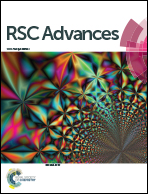Electric field-assisted ultrafast synthesis of nanopowders: a novel and cost-efficient approach
Abstract
A current trend in materials processing is the synthesis of high-reactivity powders with a particle size averaged at the nanoscopic scale. This is normally achieved by considering chemical routes that allow processing of the materials at temperatures markedly lower than those required in the conventional method. Here we introduce a simple but novel approach that enables ultrafast synthesis of materials by using electric fields. The case of CaCu3Ti4O12, where traditional chemical methods have usually revealed unable to synthesize a nanosized single-phase powder, is presented. In zero-field processing, the end-product powder prepared here via a modified polymeric precursor method exhibited, for instance, an average particle size of 300 nm. In the following, we show that thermal cycling of the precursor powder under an electric field input leads to a substantial drop in synthesis temperature, attributable to enhanced charge diffusion processes, ending with an average particle size sensibly reduced and, finally, rendering possible the production of nanopowders (<100 nm) by adjusting the maximum electric current allowed to flow across the material during processing.


 Please wait while we load your content...
Please wait while we load your content...